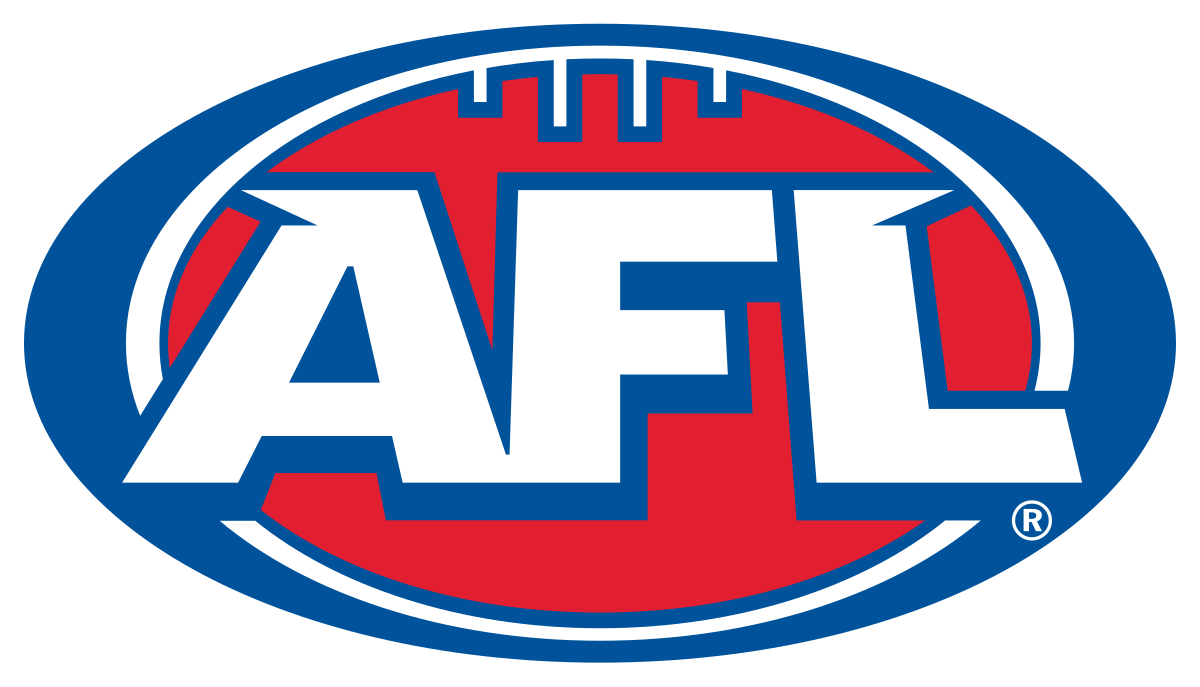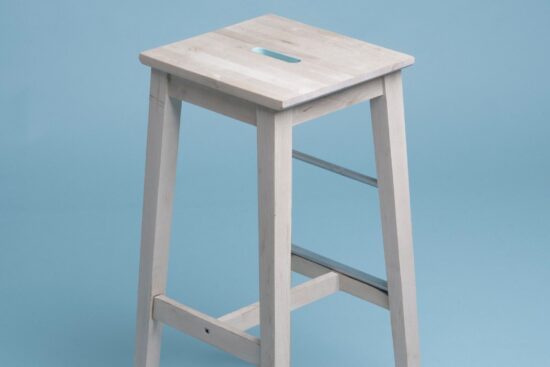
The ordinary cycle of football teams sees them rise and fall in fortune, stopping at different rungs on the ladder.
Since Chris Scott took over as Geelong coach, the lower rungs have been almost ignored in total. It’s a run that’s rarely been approached in the history of the league.
Under Scott, finals have been an almost certainty for the Cats.
[datawrapper 1]
Last week, Scott — a two-time premiership coach — marked his 350th match in charge of the club, with 237 of those ending in victory.
For Scott, the milestone itself was less important than the connections he has made along the way.
“It’s nice. It’s not my thing really,” Scott told reporters.
“I guess it’s a nice acknowledgement that I’ve been around, and I really do appreciate the support of not just the Geelong footy club, but the Geelong people.”
Geelong sits poised to play a major role in the premiership race yet again.
Its march back up the ladder has been driven not only by stars, both young and old, but also the chameleon-like techniques of the man in charge of the whiteboard.
Like he tends to do, Scott has shifted the way the Cats play in 2025 to be different from the 2022 premiership side.
While the premiership cup might not sit at Kardina Park right now, the Cats will likely have a large say in who takes it home in September.
Scott staying mum on tactics
Media commentators, ex-players and fans have long acclaimed Scott as a tactical mastermind.
His name often comes up when the most strategic coaches of the modern era are discussed.
But Scott himself is usually reluctant to discuss his actual on-field strategy. When ABC Sport tried to ask about his approach after Geelong’s loss to Brisbane two weeks ago, Scott was clear about his secrecy.
“In terms of the way we try to play … I don’t talk about our tactics that much or the way we play,” Scott said.
“Other coaches do, but I prefer to keep those things a little bit more to myself.”
Other coaches have been a little more forthcoming about some of the challenges in facing the Cats.
“They are certainly a team that can shift the ball, they’re also a very powerful go-forward team with speed, so you know they can do it multiple ways,” Melbourne coach Simon Goodwin said after his side’s round-four loss to Geelong earlier this year.
[Datawrapper2]
This malleability is at the heart of the Cats’ success this year.
They switch up the speed at which they move the ball on a week-to-week basis as much as any other team.
The Cats can shift modes with ease and possess several core elements designed to put opposition sides off their game.
Against the Demons, they racked up 165 marks, with 148 of them uncontested.
When they faced Adelaide the next week, the Cats only took 73 marks total. Both matches ended in Geelong wins.
There are too many moving parts in the modern game to break down all the elements, and too many small parts that impact the wider game. Instead, it’s worthwhile focusing on a couple of the more important parts.
Despite Scott’s stonewalling around tactics, he sometimes reveals a little behind the curtain. In round nine, Geelong started the match with Coleman Medal leader Jeremy Cameron in the centre square.
“We started Smith out on the wing, Cameron in [the centre bounce],” Scott said.
“I’m not saying it shouldn’t have been Cameron in because that was, you know, that was one of those things where I thought it was a very high probability of it working.”
That assessment of potential success is telling. Cameron has been thrust into the middle before, but perhaps not in as prominent a role.
Geelong also famously relied on a two-ruck approach at centre bounces in its charge to the 2022 flag, with the roles of Mark Blicavs and Rhys Stanley creating mismatches for opposition sides.
Playing the percentages — and understanding when the percentages change — is a key to the success of the Cats in recent years.
That first passage of play in the game saw Cameron matched up with Finn Callaghan, before the Giants switched the smaller Lachie Ash onto him. That’s the sort of match-up Scott would want for his talisman.
While the centre-square experiment didn’t ultimately work for Cameron and the Cats, it did point to another clear difference to how the team sets up.
[Datawrapper 3]
Tall forwards sometimes lurk higher up the ground, but often as an outlet for packs and taking contested marks.
Not Cameron. Of his 25 marks taken beyond halfway, all of them are uncontested.
He doesn’t spoil much either, with his 0.4 spoils per match the lowest for any of the top 20 goal-kicking key forwards this year.
Instead, Geelong uses Cameron as a link option up the ground, testing whichever opponent is unlucky enough to be tasked to run near him.
Cameron’s forays up ground force defences into a conundrum — either switching and giving up a size differential, or moving a key defender away from the back half and making cover defence harder.
There’s no right answer and whatever is chosen can shift the opposition side out of shape.
Cameron isn’t the only tall that Scott uses higher up the ground.
Both Shannon Neale and Oliver Henry loiter very high for traditional tall forwards, often creating mismatches or exceptional amounts of space for their other forwards inside 50. All three are good ball users to boot.
[Datawrapper4]
Tellingly — although the Cats are first for marks inside 50 — they have only one individual player inside the top 20 (Cameron).
Against sides with weaker tall defenders, the Cats’ talls tend to sit deeper, and against stronger defences, they try to create more mismatches. It’s a predictably unpredictable approach.
This approach resembles Brisbane’s recent forward set-ups, which is a clear nod to the influence of the reigning premiers. It isn’t the only way that the Cats have seemingly shifted their core philosophy towards the Lions.
Common elements in Cats’ approach
As alluded to above, not everything shifts on a week-to-week basis.
There are some facets of their game that seem present from week-to-week that have helped to shape the identity of this version of the Cats.
Most prominently, this includes their devotion to using the ball by foot.
[Datawrapper5]
The Cats have the biggest share of kicks as a share of total disposals so far this year. In a related measure, they also have the second most marks of any side. The only side with more marks is Brisbane.
[Datawrapper 6]
There’s one area that this use by foot stands out in particular: at the coalface. The Cats generate the second most ruck contests per game this year (behind the Suns), and have the second-best scoring differential from stoppage (behind the Bulldogs). This has been a focus of their game.
[Datawrapper 7]
The first disposal from stoppage is often hard to get away, with space at a premium. This year the Cats have been the side to utilise the kick immediately from non-centre bounce stoppages more than any other. At the same time, they force opposition sides to handball.
This is a clear sign of the priority that territory plays in the current Geelong system. A clean kick is better than a clean handball, and a messy kick better than a messy handball.
Geelong looks to position effectively at the second contest to make best use of quick kicks and half-chances.
The Cats’ defensive set-ups around the contest have long been the envy of the league and at post-bounce stoppages they often draw in extra defensive-minded players around the clinches. Instead of a heavy ball-winning focus, they prioritise quality exits and opportunities forward.
Players like Tom Atkins and Mark O’Connor are critical to this balance. It allows them to deploy Max Holmes and Bailey Smith in more attacking roles with a freer licence. When they lose the clearance, the Cats’ deeper defence is still holding up relatively well.
Finals tougher to win than ever before
Despite the Cats’ outstanding knack in winning games through the season under Scott, some have criticised the Cats’ ability to win finals under his reign.
While Scott has the biggest differential between home-and-away and finals’ win percentage, a slide is not uncommon.
Jock McHale — the most decorated pre-World War II coach — had a similar finals’ win percentage but seven flags to his name.
[Datawrapper 8]
As the competition becomes increasingly even across the board, winning finals and flags is a tougher exercise than ever before. Seven of the eight teams who enter finals leave after a loss. Margins are tight.
“I think it’s been harder in the last few years than it’s ever been,” Scott said last week.
“So there’s a couple of things there. You need a bit of luck. Like the team that wins it always gets a bit of luck.
“It’s true that the best team generally wins, but not many teams win it when a whole lot of things go wrong. It’s so hard to plan for all of that bad luck, but you can a little bit.”
There’s a couple of schools of thought around the best set-up for a side to win in the AFL finals. Some see a flexible approach ideal, as counters to the opposition can come through as sides progress through.
Others prefer a more rigid approach that relies upon a relatively set game plan to overcome all others.
Scott will be banking on that flexibility — and playing the percentages — to drive the Cats to yet another flag and the rest of the competition to the drawing board.









Leave a Reply